Inside: Here are 27 creative garden border ideas that bring style and charm to your outdoor space. These simple ideas can really make your garden look neat and inviting.
Your garden borders can totally change the look of your yard. They create a clear edge, making your garden stand out and stay organized.
Whether you’re after something natural or more structured, there’s a style out there for you. Honestly, it’s fun to experiment and see what fits.
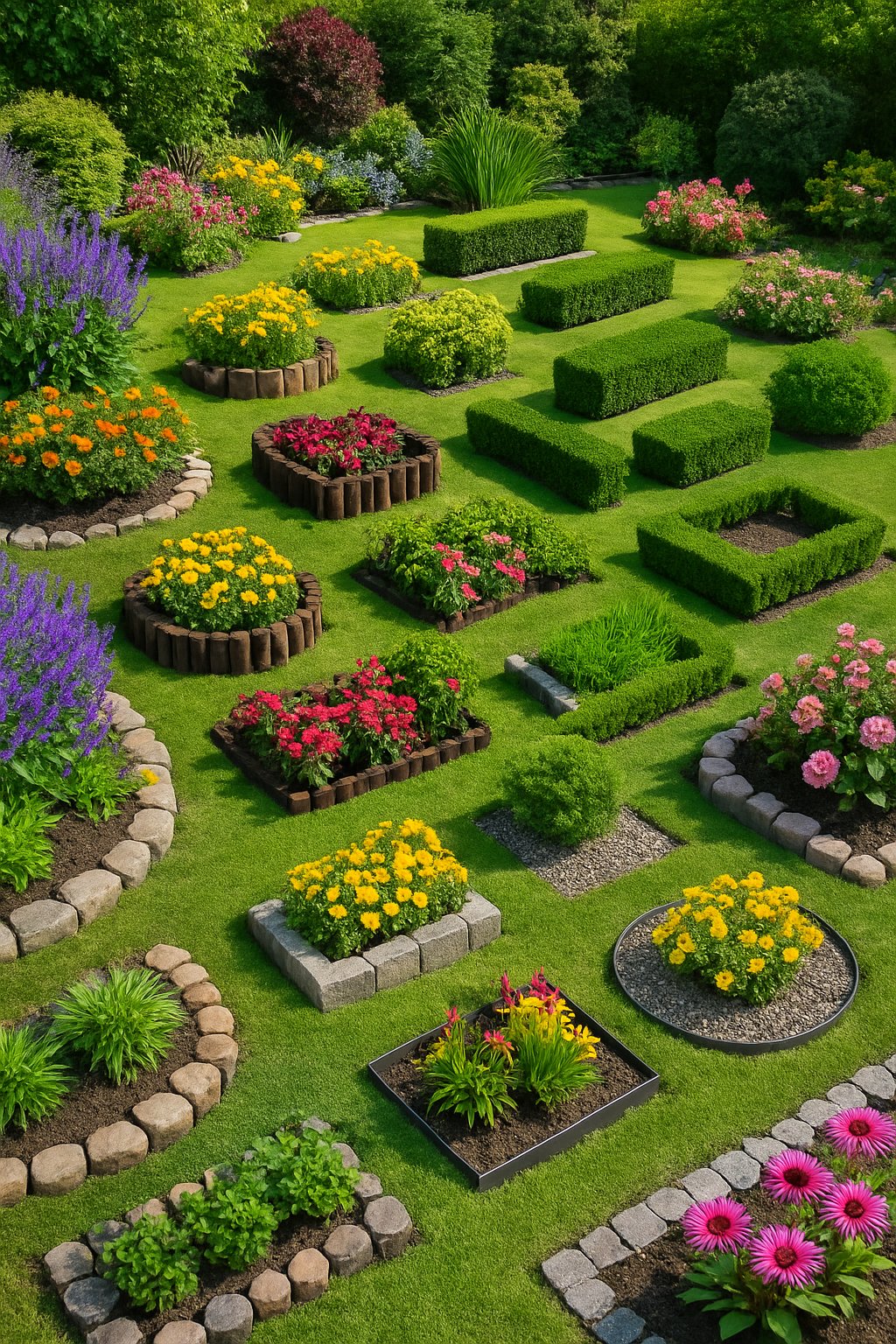
1. Natural Rock Edging for Rustic Flower Beds
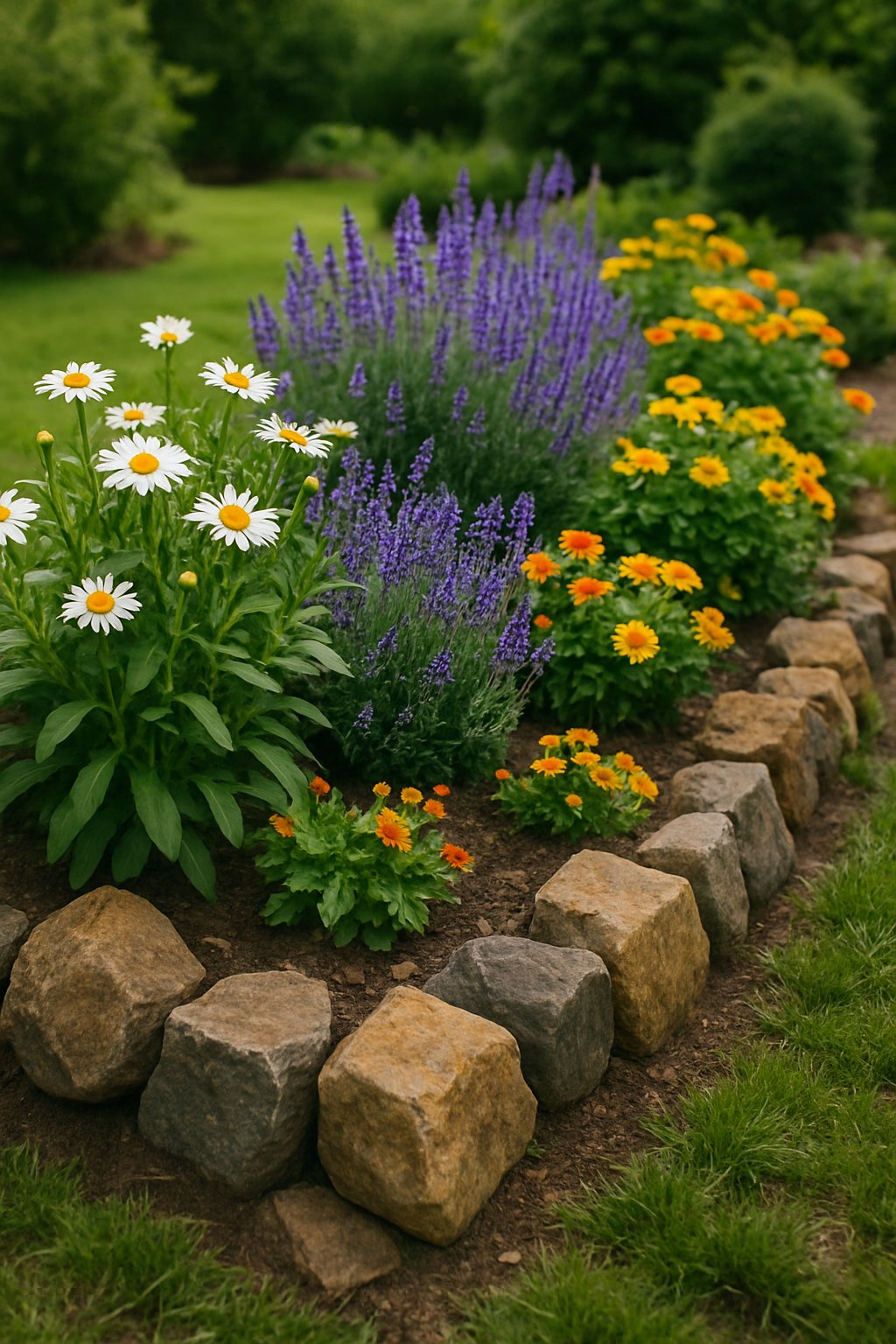
Natural rocks give your flower beds a simple, rustic edge. They blend right in with plants and add a sturdy, grounded vibe.
You can pick different sizes and shapes to match your style. Rocks hold in soil and mulch, and honestly, they need almost no upkeep.
They last for years, so you won’t have to fuss with them much. If you want a natural, low-maintenance border, this is a solid choice.
Expert Tip from MrPlanter: “Lay 4-6 inches of crushed stone under the rocks for better stability. Use landscape edging on the outside to stop grass from creeping in.”
2. Recycled Brick Borders for Classic Look
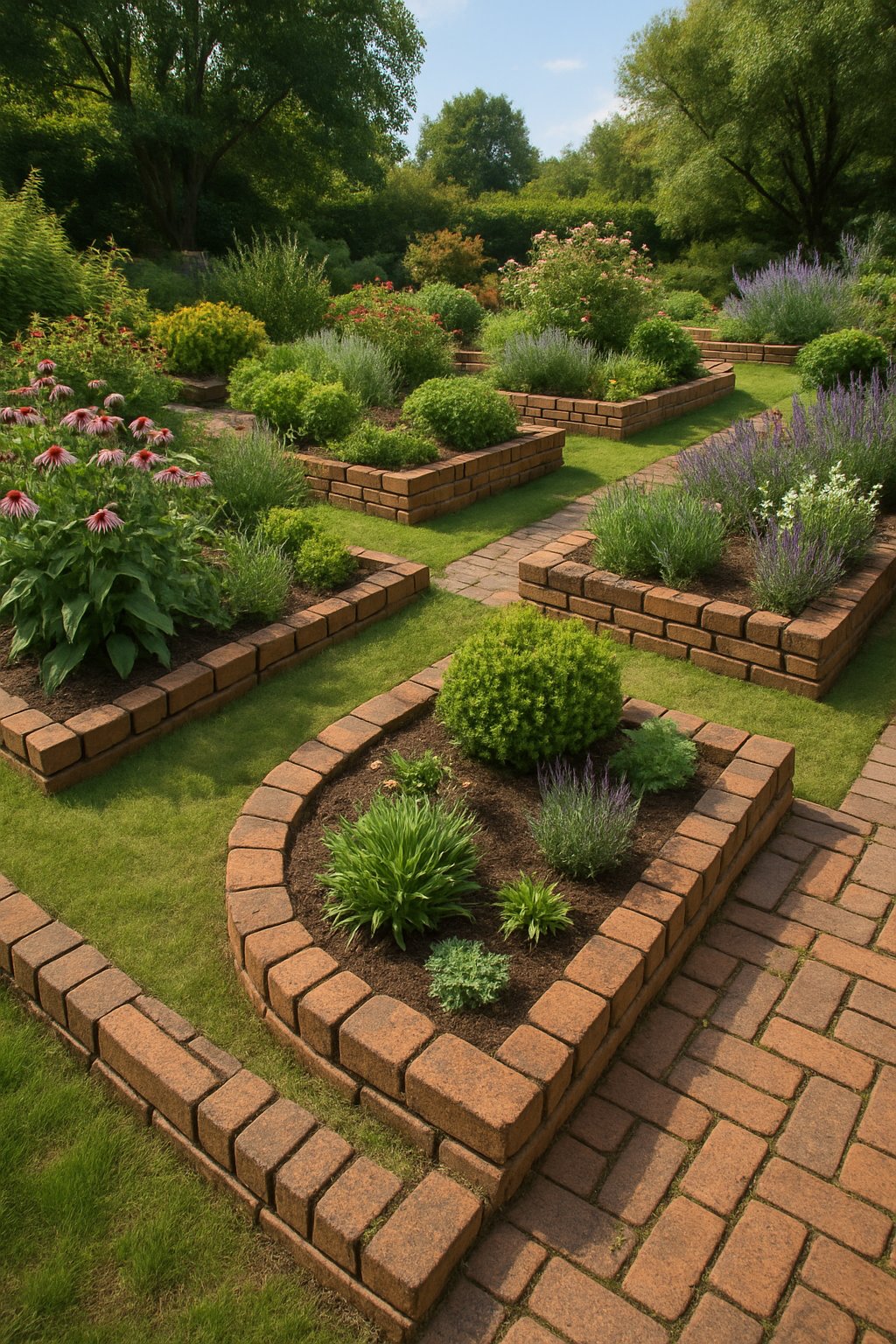
Try recycled bricks for a timeless feel. These bricks usually have a worn texture that gives your garden character.
They’re sturdy and handle weather changes well. Arrange them in rows or stack them up if you want more height.
This border is eco-friendly and easy on your wallet. It’s a smart pick for a lot of gardeners.
Expert Tip from MrPlanter: “Clean your recycled bricks with a wire brush for the best appearance. Lay them on a sand base to keep them stable and avoid shifting.”
3. Wooden Log Slices as Unique Edging
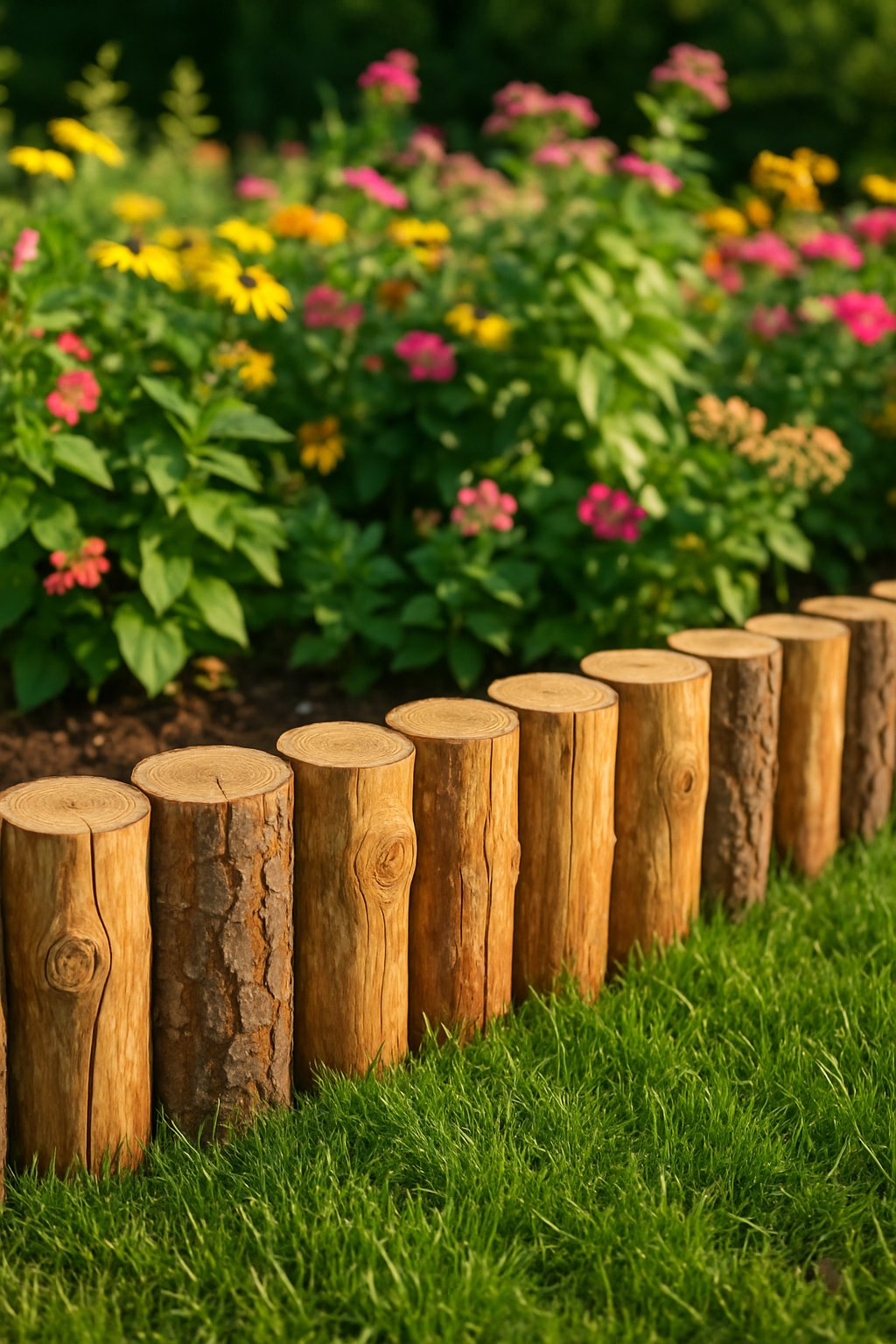
Use wooden log slices for a natural, rustic border. Just cut logs into thin rounds and line them up along your flower bed or path.
It adds texture and a charming look—no fancy materials needed. Treat the wood with sealant so it lasts longer outside.
Vary the height of the slices if you want a playful, uneven edge. It doesn’t have to be perfect to look great.
Expert Tip from MrPlanter: “Use logs from local trees to match your garden’s style. Seal the slices to prevent rot and insects.”
4. Cedar Fence Plank Edging Buried Flush
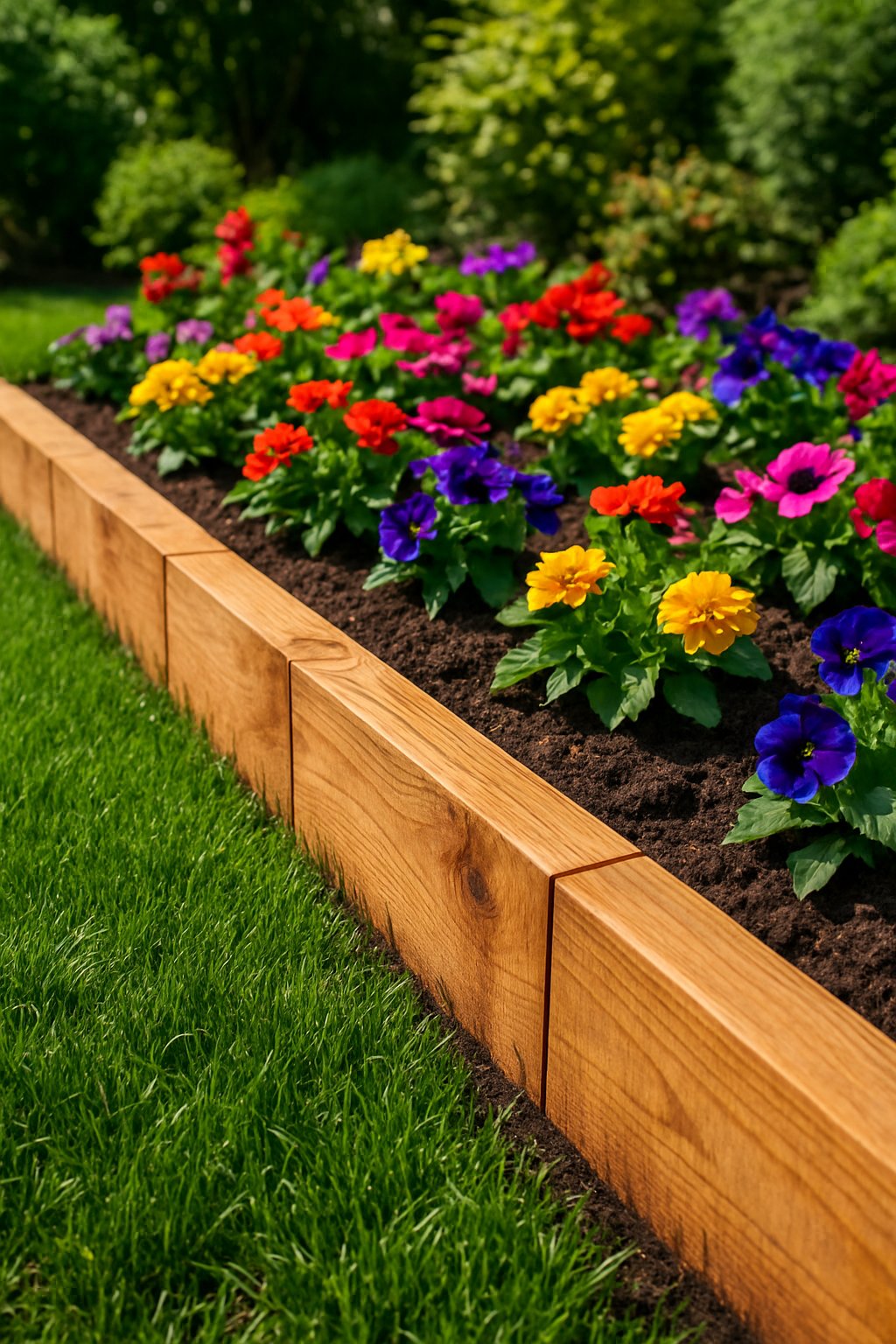
Bury cedar fence planks flush with the ground for a clean, natural border. This keeps the planks stable and helps prevent tripping.
It also holds mulch or soil inside your garden bed. Make sure the planks are treated or naturally rot-resistant for a longer life.
Bury them deep enough so just the top edge shows. It’s a simple but effective look.
Expert Tip from MrPlanter: “Choose straight cedar planks for a neat look. Seal the cut ends to protect against moisture and extend durability.”
5. Metal Garden Edging Strips for Clean Lines
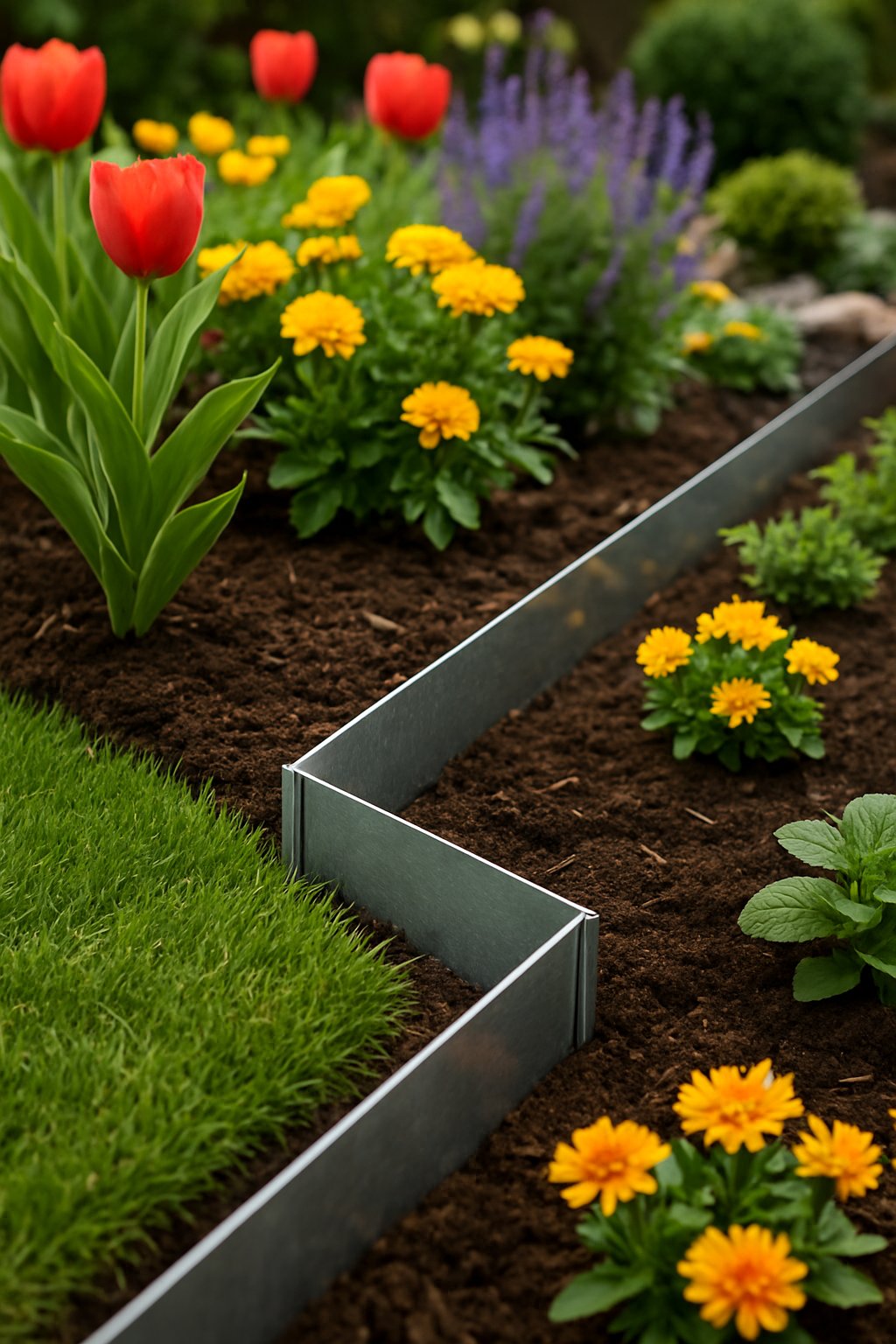
Metal edging strips give your garden sharp, tidy lines. You can bend them to fit curves or keep them straight for a modern vibe.
Steel strips are tough and won’t rust or break easily. They keep grass out of your flower beds and make mowing a breeze.
You can pick from different heights and lengths, so there’s something for every garden. It’s a nice, no-nonsense option.
Expert Tip from MrPlanter: “Install metal edging by hammering stakes firmly to avoid shifting. Choose corrosion-resistant steel for long-lasting borders.”
6. Stacked Stone Border for Texture
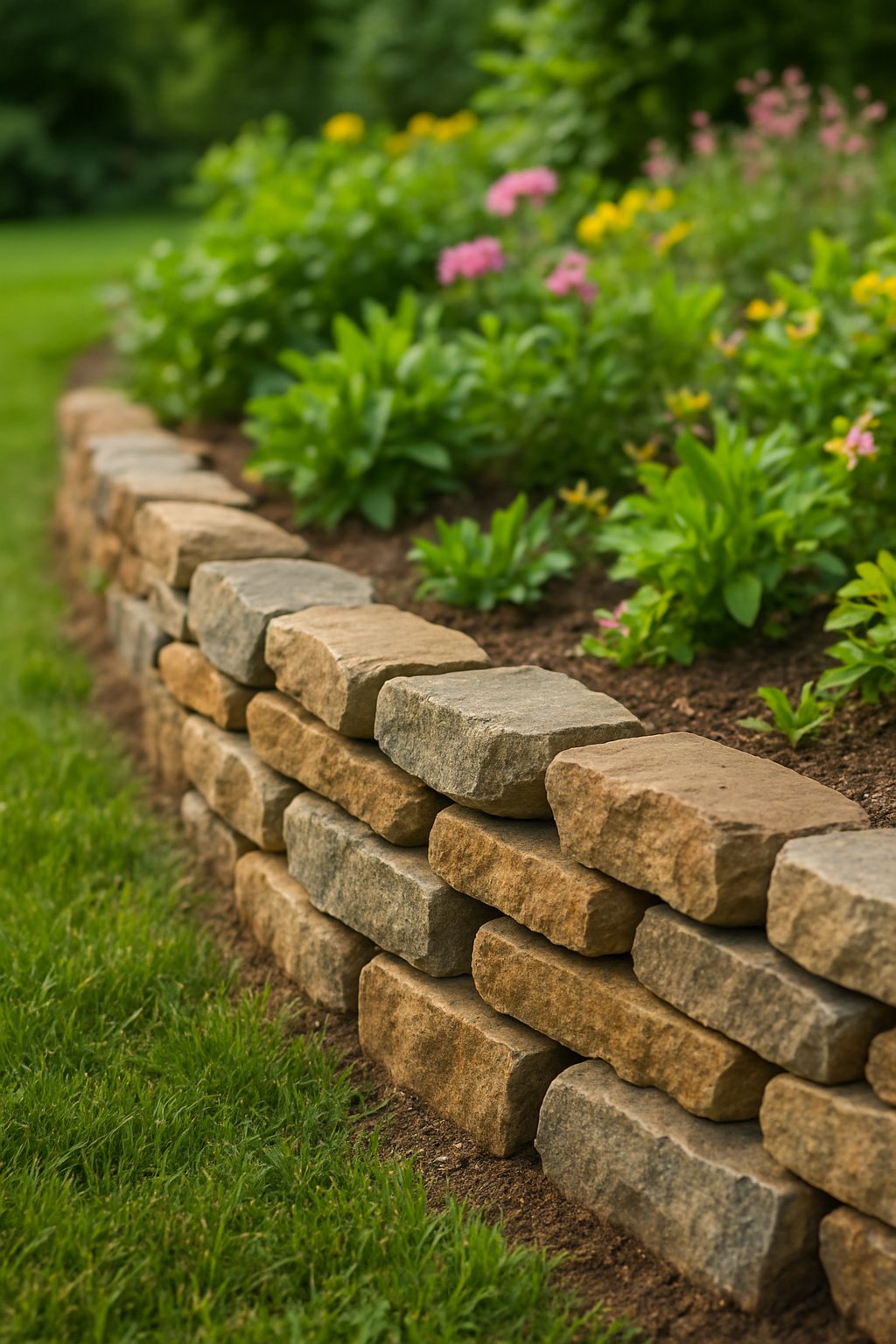
Stacked stone borders add a natural, rugged look. Use flat stones to build a low wall and bring depth and texture to your garden.
You can find stones in nature or at the garden center. Stack them without mortar for a casual feel, or use a bit of cement for extra stability.
Expert Tip from MrPlanter: “Make sure the stones fit tightly together for stability. Start with larger stones at the bottom to create a strong base.”
7. Low Growing Boxwood Hedges
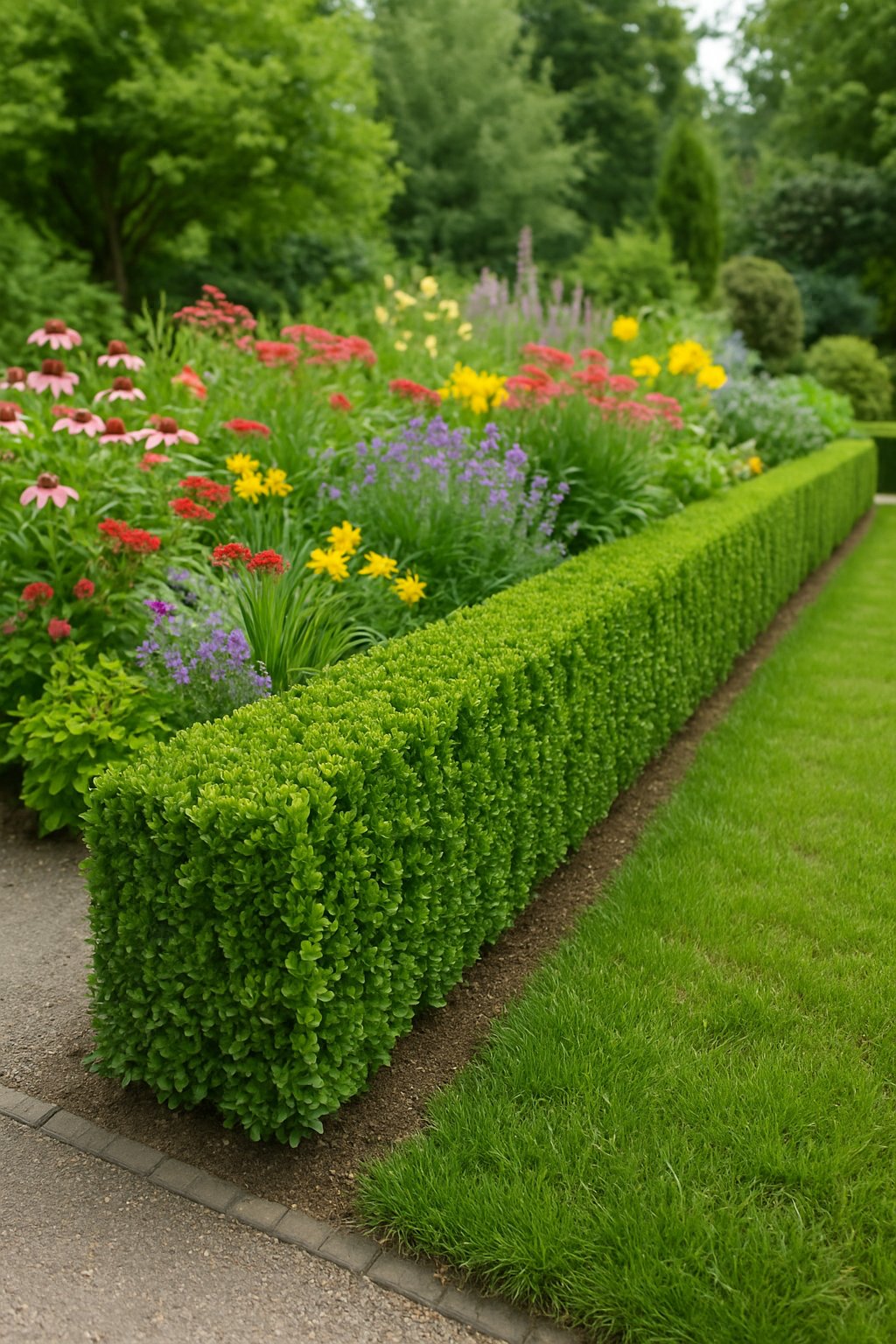
Low boxwood hedges make a neat, simple border. They add structure but don’t block your view or take up much space.
These hedges stay green all year and are easy to shape. You can use them to frame flower beds or create little paths.
They grow slowly, so you only need to trim them now and then. It’s a classic look, but not boring.
Expert Tip from MrPlanter: “Plant boxwoods in well-drained soil and give them morning sun for best growth. Trim regularly to keep the hedge looking tidy and dense.”
8. Perennial Flower Edge for Color Variety
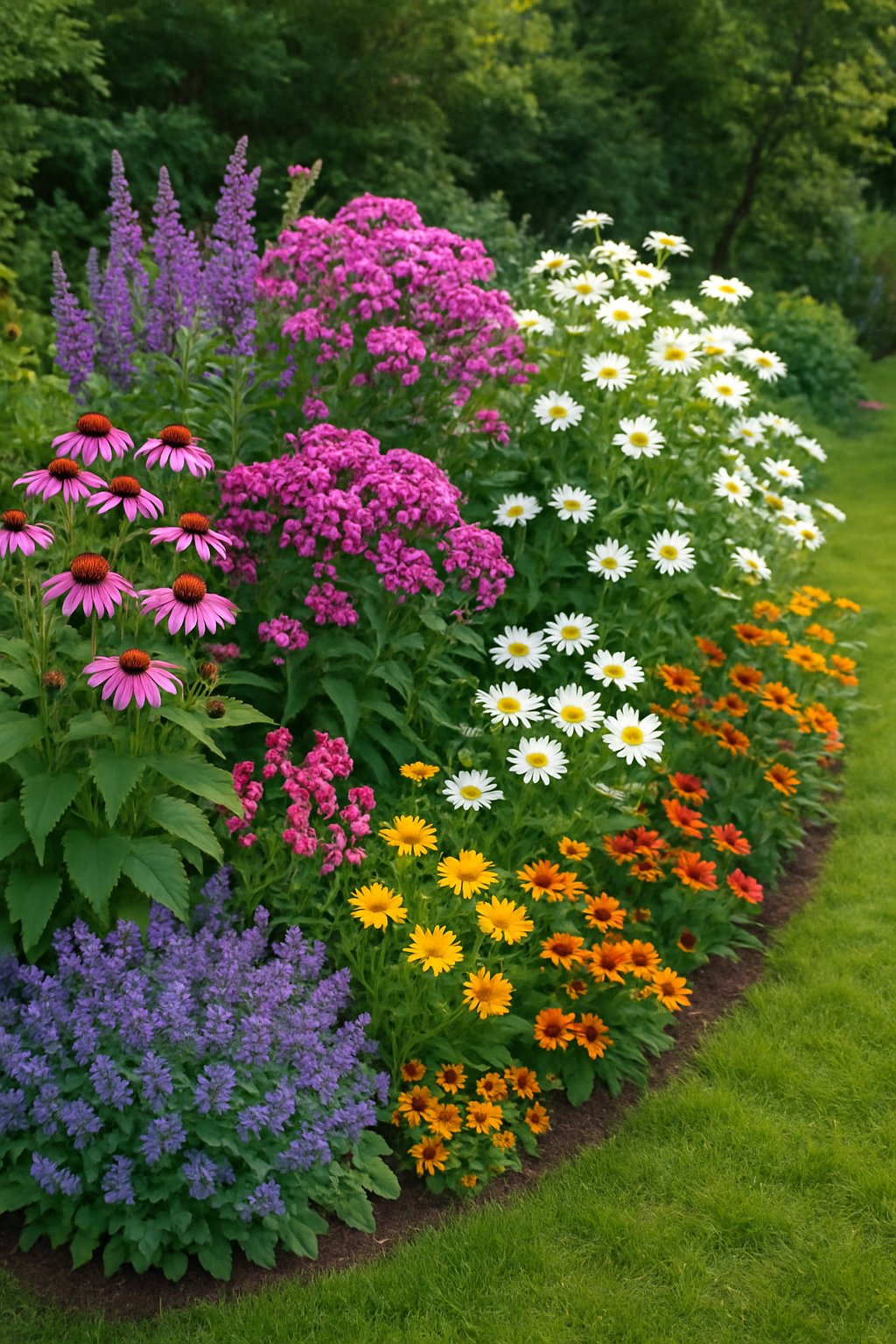
Plant perennial flowers along your garden border for color all season. These plants come back every year, which saves you time.
Mix up the types for a colorful edge that changes with the seasons. Choose flowers that match your sun and shade spots for the healthiest border.
This approach brings a soft, natural look to your garden’s edges. It’s easygoing and a little bit wild.
Expert Tip from MrPlanter: “Pick a mix of early and late bloomers for constant color. Use compact perennials to keep your border neat and tidy.”
9. Small Ornamental Trees as Borders

Small ornamental trees work well as borders, adding height and structure without taking over. They’re great along pathways or edges where space is tight.
Pick trees that stay compact and offer year-round interest, like dwarf dogwoods or Japanese maples. Their shapes and colors create a natural boundary.
Give them enough room to grow, and keep roots from crowding other plants. Pruning keeps the border neat.
Expert Tip from MrPlanter: “Pick trees suited for your climate to ensure healthy growth. Regular watering in the first year helps young trees settle in well.”
10. Concrete Blocks Painted Bright Colors
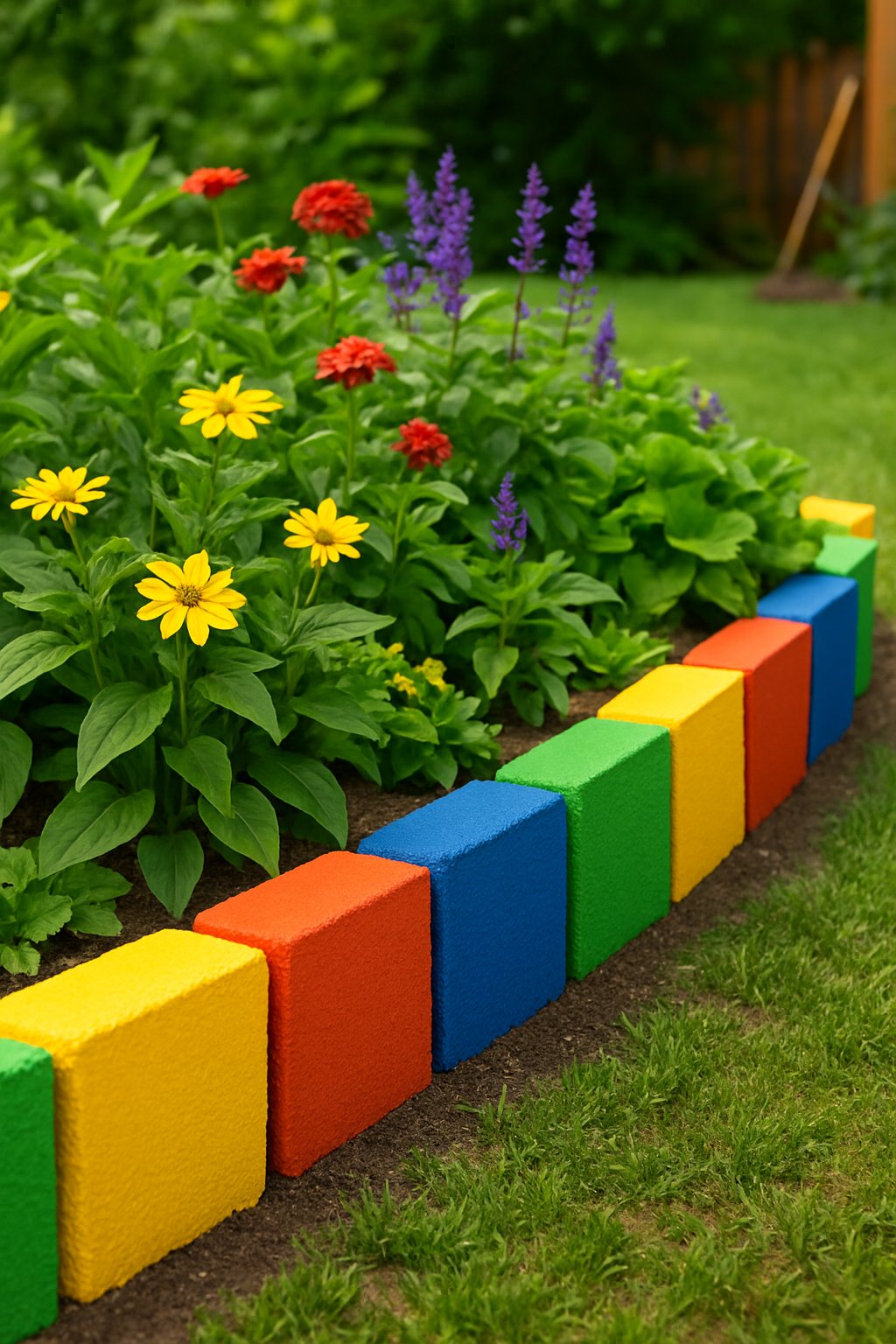
Paint concrete blocks in bright colors for a bold garden border. It’s a fun and unique way to liven up your yard.
You can rearrange the blocks whenever you want a new look. They also double as planters for small flowers or herbs.
Expert Tip from MrPlanter: “Choose weather-resistant paint to keep colors bright longer. Seal your blocks to protect them from rain and sun damage.”
11. Repurposed Wine Bottles Lined Up
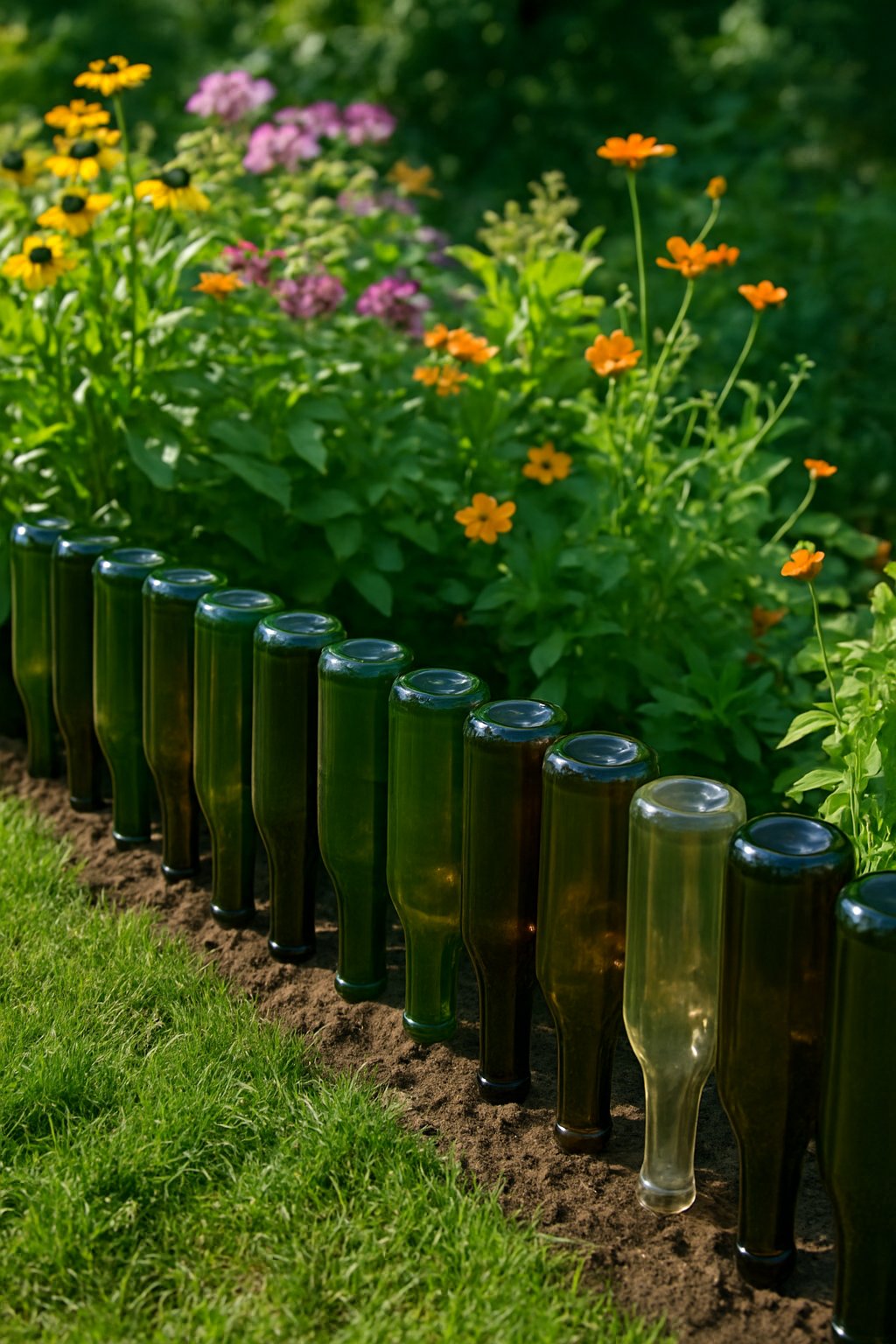
Line up empty wine bottles neck-down to create a colorful, sturdy border. Use bottles of the same color for a tidy look or mix things up for more variety.
Push them deep into the soil so they stay put. This border is eco-friendly and gives old bottles a second life.
It’s a simple way to add charm and protect your garden beds. Plus, it’s kind of a conversation starter.
Expert Tip from MrPlanter: “Make sure to clean bottles well before planting to avoid pests. Use a rubber mallet to gently tap bottles into place for better grip in the soil.”
12. Seashell Border for Beachy Vibe
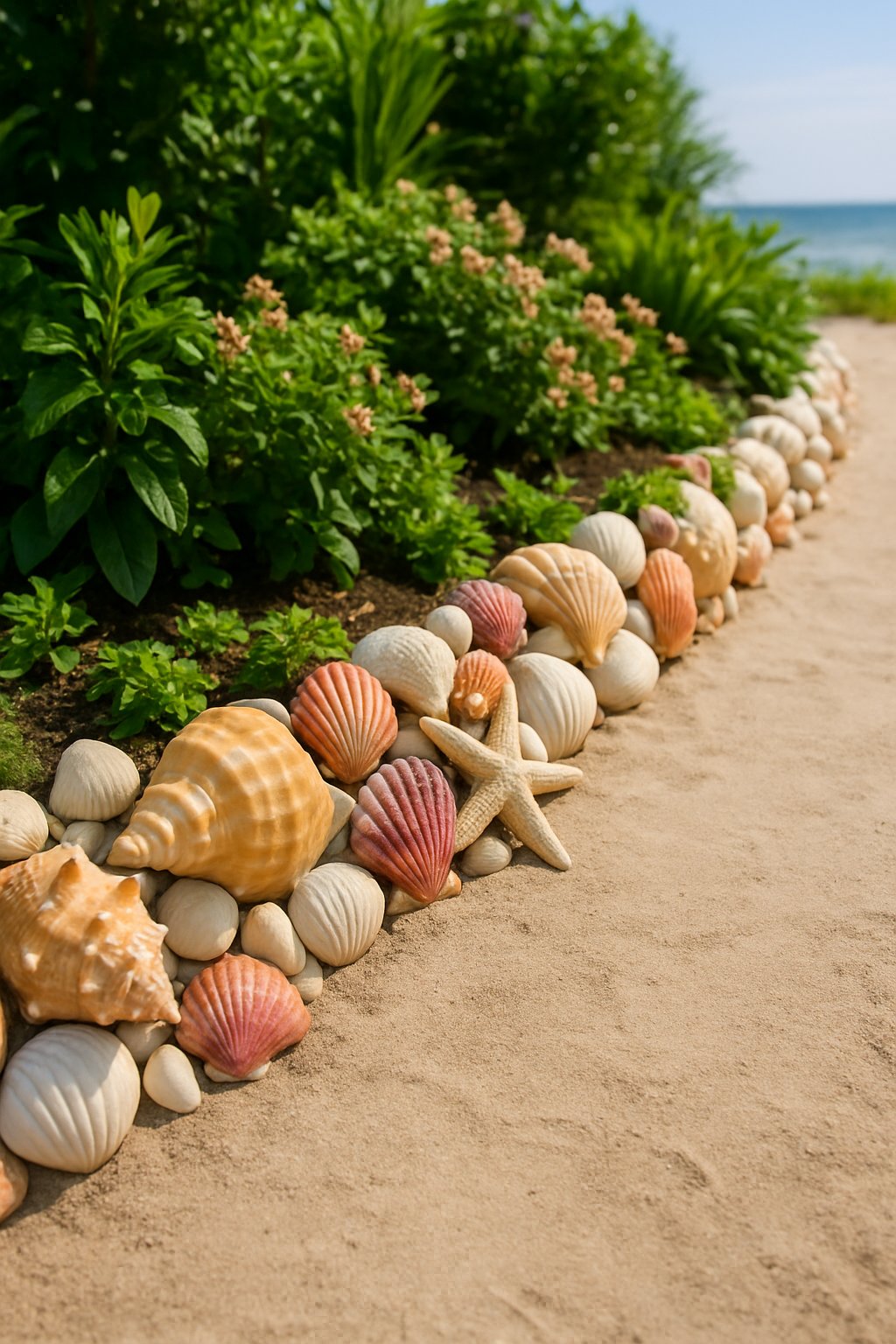
Scatter seashells along your garden edge for a natural, coastal feel. Small or medium shells work great for paths or flower beds.
Over time, the shells break down and add calcium to your soil. That’s both pretty and practical.
Mix up the shell types and sizes for more texture. It’s a low-cost way to bring the beach home.
Expert Tip from MrPlanter: “Use shells collected sustainably or buy discarded ones to protect marine life. Lay them in a shallow trench to keep your border neat and lasting longer.”
13. Solar Garden Lights Along Edges
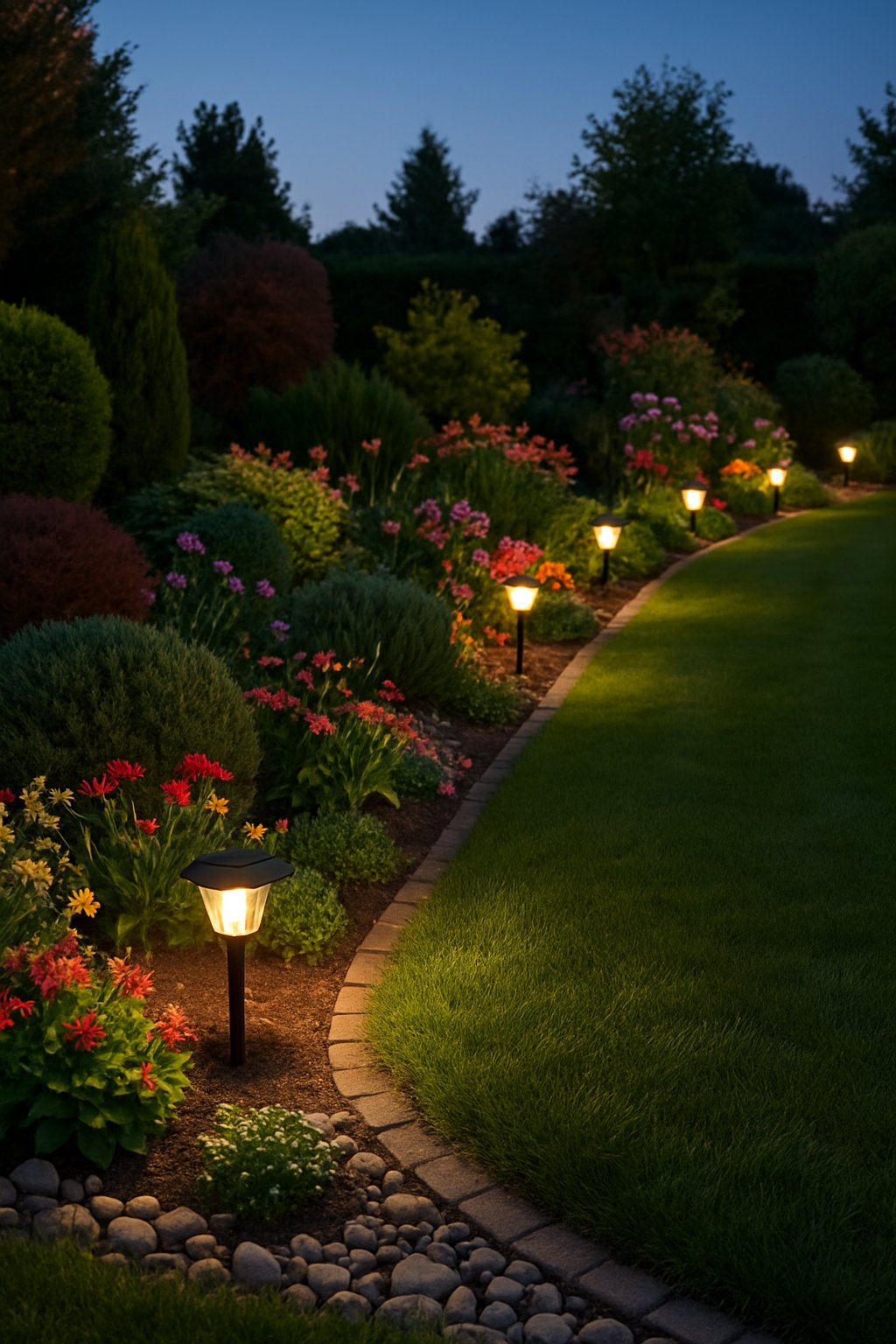
Line your garden borders with solar lights for a soft glow at night. These lights run on sunlight, so you won’t need any wiring.
They help define edges and add a cozy atmosphere. Pick warm-toned lights to highlight plants and paths in a subtle way.
Place them close enough to avoid dark patches, but don’t overdo it. Sometimes less is more.
Expert Tip from MrPlanter: “Pick solar lights with adjustable brightness to suit your garden’s mood. Make sure they get enough sunlight during the day for better performance at night.”
14. Gravel Pathway Borders
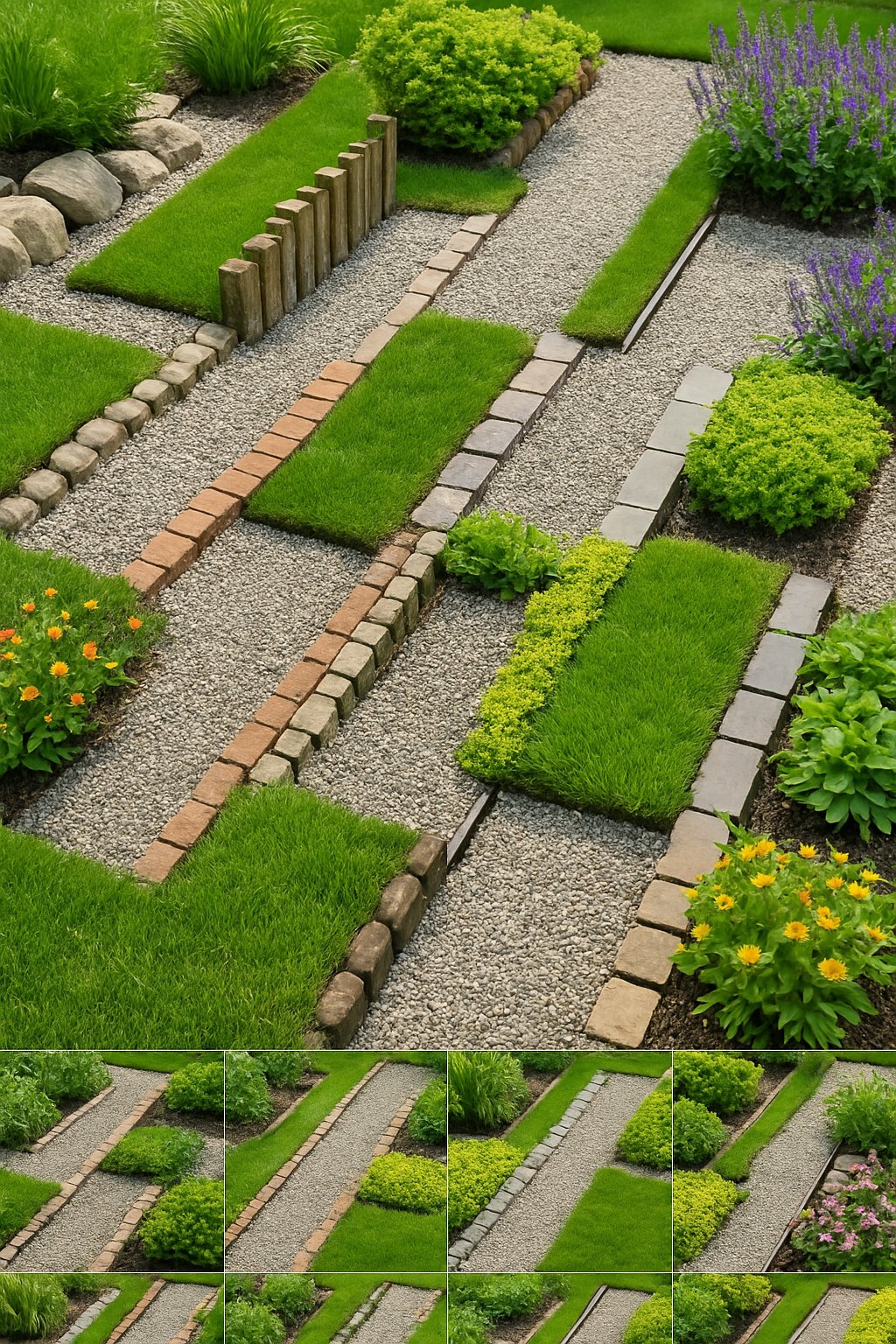
Edge your gravel pathways with bricks, stones, or pavers to keep gravel from spilling into your lawn or beds. Wood or metal also works for a different vibe.
Pick a border that matches your yard’s style and makes mowing easier. Don’t be afraid to mix materials if you feel like experimenting.
Expert Tip from MrPlanter: “Use crescent-shaped pavers for easy mowing along your gravel path. They hold gravel in place and protect your grass.”
15. Succulent Border Garden
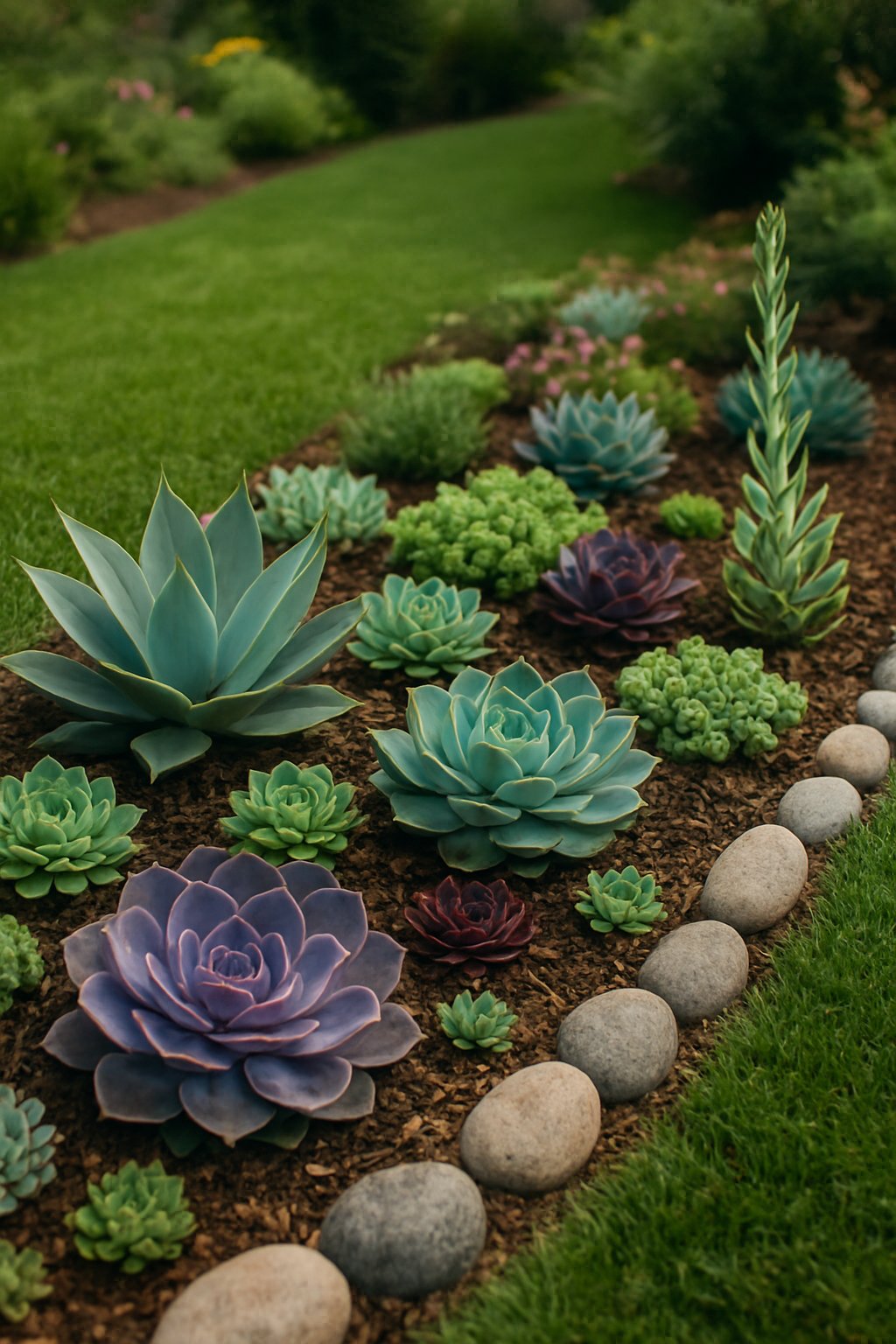
Try making a neat border with low-growing succulents. These little guys barely need water and can give your garden a fresh, modern look.
Mix up shapes and colors for texture along your pathways or flowerbeds. Succulents thrive in sunny spots, and honestly, they’re a breeze to care for.
Expert Tip from MrPlanter: “Choose succulents with varied heights to keep your border visually interesting. Water only when the soil is dry to prevent overwatering.”
16. Wooden Railroad Ties for Bold Edge
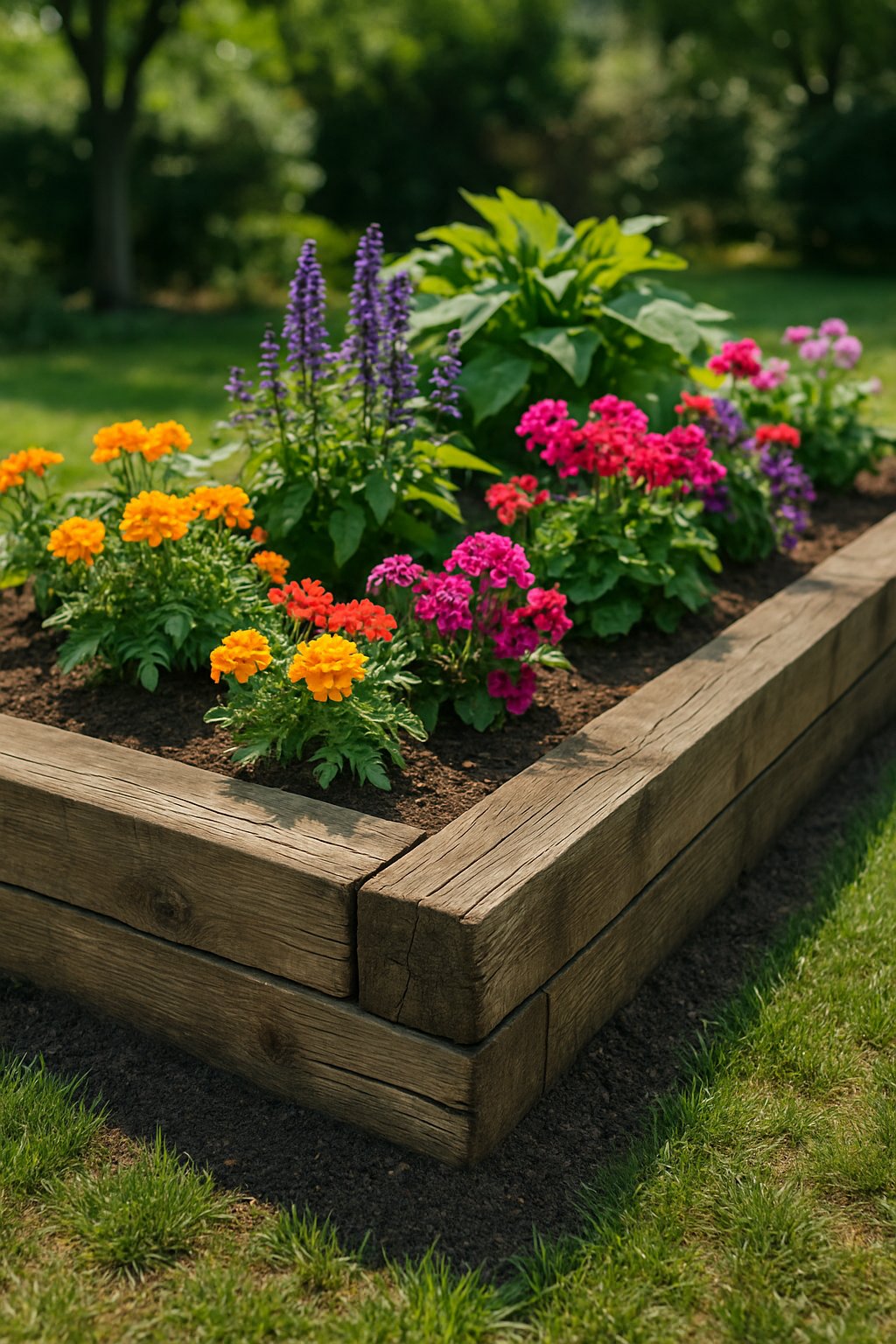
Try using wooden railroad ties if you want a bold, natural border. Their thick, rugged look really pops and helps keep soil and plants where you want them.
But here’s the thing: some ties are treated with chemicals, so be careful around edible plants. Safer options like untreated wood are out there and look just as good.
Expert Tip from MrPlanter: “If you use railroad ties, seal them well to reduce weather damage. Always check for chemical treatment before placing near food crops.”
17. Corrugated Steel Garden Walls
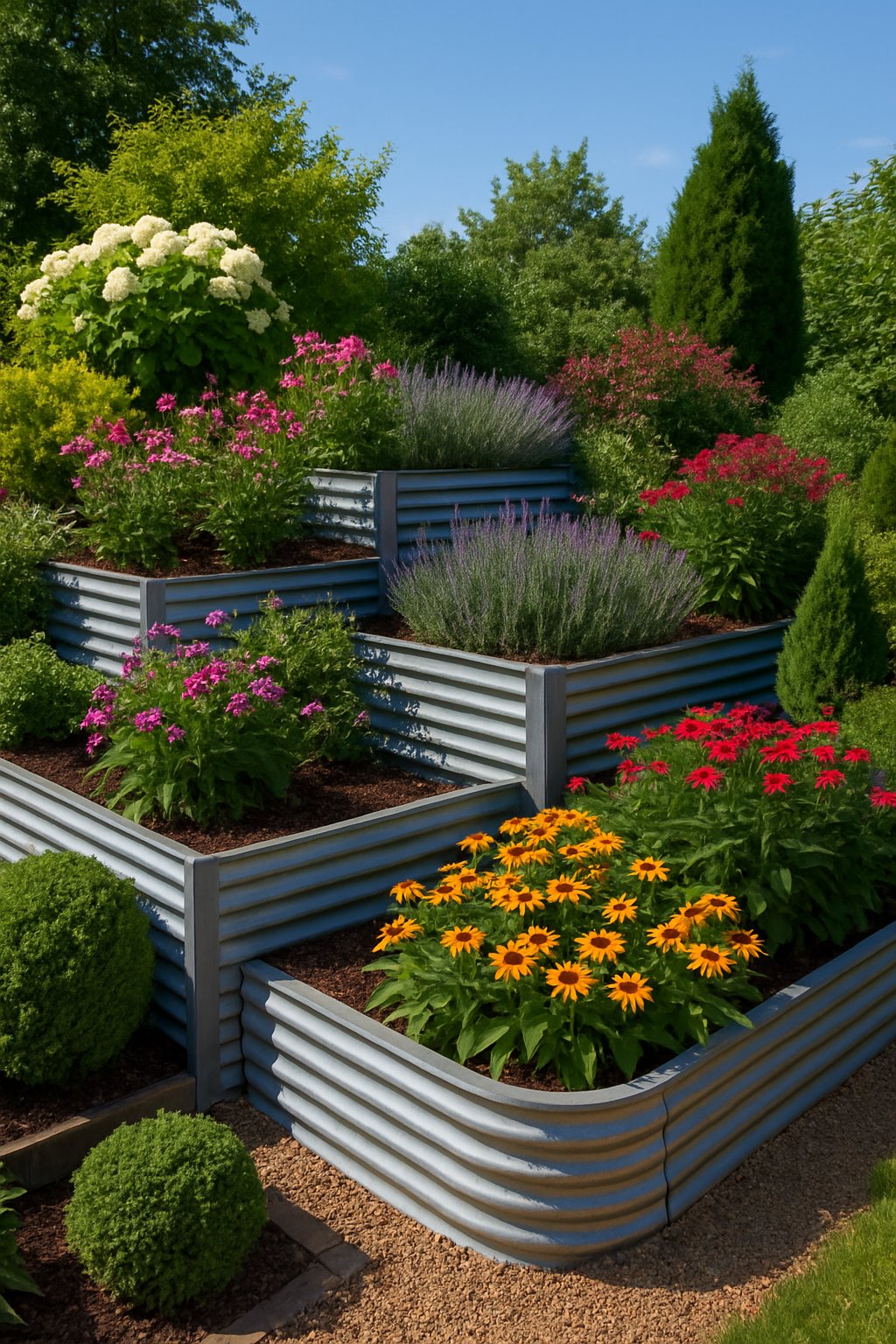
Corrugated steel makes a tough garden wall. It shrugs off rust and stands up to wild weather, giving your garden a modern, industrial vibe.
Use it for raised beds or simple borders—either way, it holds its ground. Anchoring stakes help keep things steady if the wind picks up.
It’s low-maintenance and blocks weeds and roots surprisingly well.
Expert Tip from MrPlanter: “Use galvanized steel to avoid rust and ensure longer life. Secure the walls firmly to prevent movement during heavy rain or wind.”
18. Terracotta Pot Edges Laid Sideways
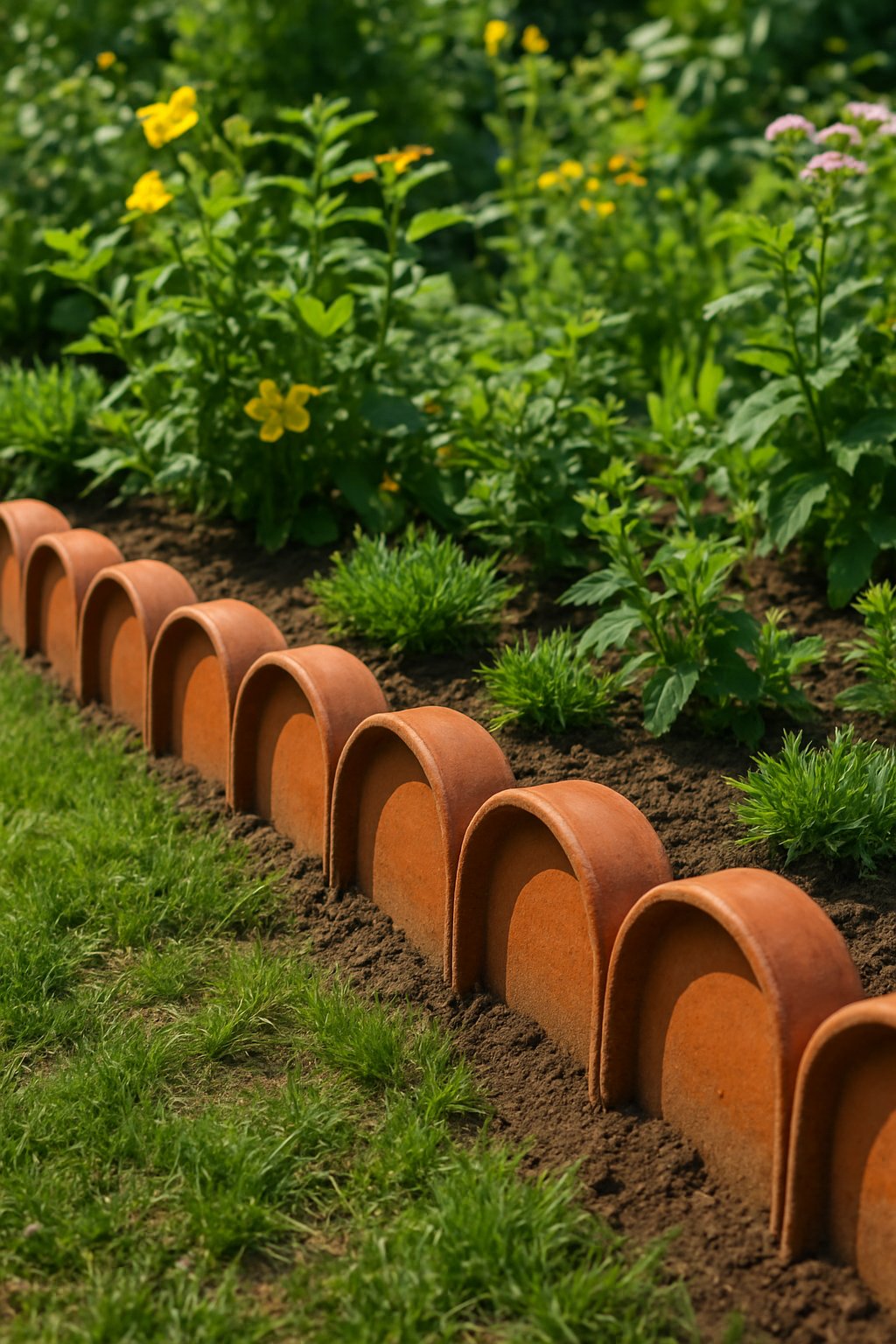
Grab some old terracotta pots and lay them sideways for a quirky garden border. Line them up for a curved or straight edge—either way, you’ll get a warm, earthy look.
You can even fill the pots with soil and small plants to sneak in a little extra greenery. It’s easy to install, and if you ever change your mind, you can move them.
Expert Tip from MrPlanter: “Make sure the pots are stable by burying half of them underground. This keeps them from tipping over in bad weather.”
19. Natural Cypress Mulch Rims
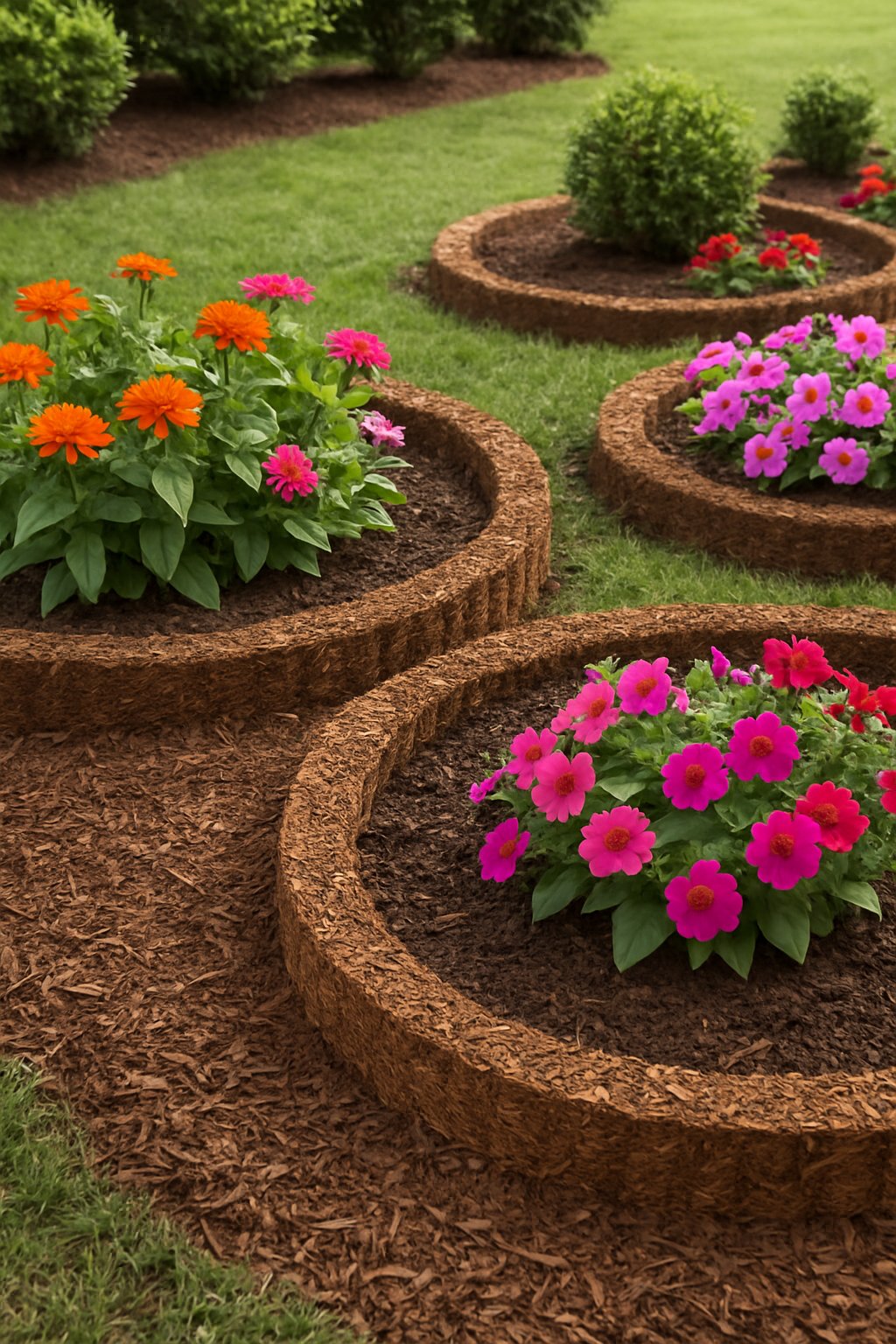
Try cypress mulch as a border if you want something that looks natural and tidy. It helps the soil hold moisture and slows down weeds.
Cypress mulch breaks down pretty slowly, so you won’t be topping it up all the time. Shape it into clean rims along paths or beds for a soft, inviting look.
Expert Tip from MrPlanter: “Spread cypress mulch about 2-3 inches thick for the best weed control. Refresh it yearly to keep your garden borders looking fresh and tidy.”
20. DIY Pallet Wood Edging
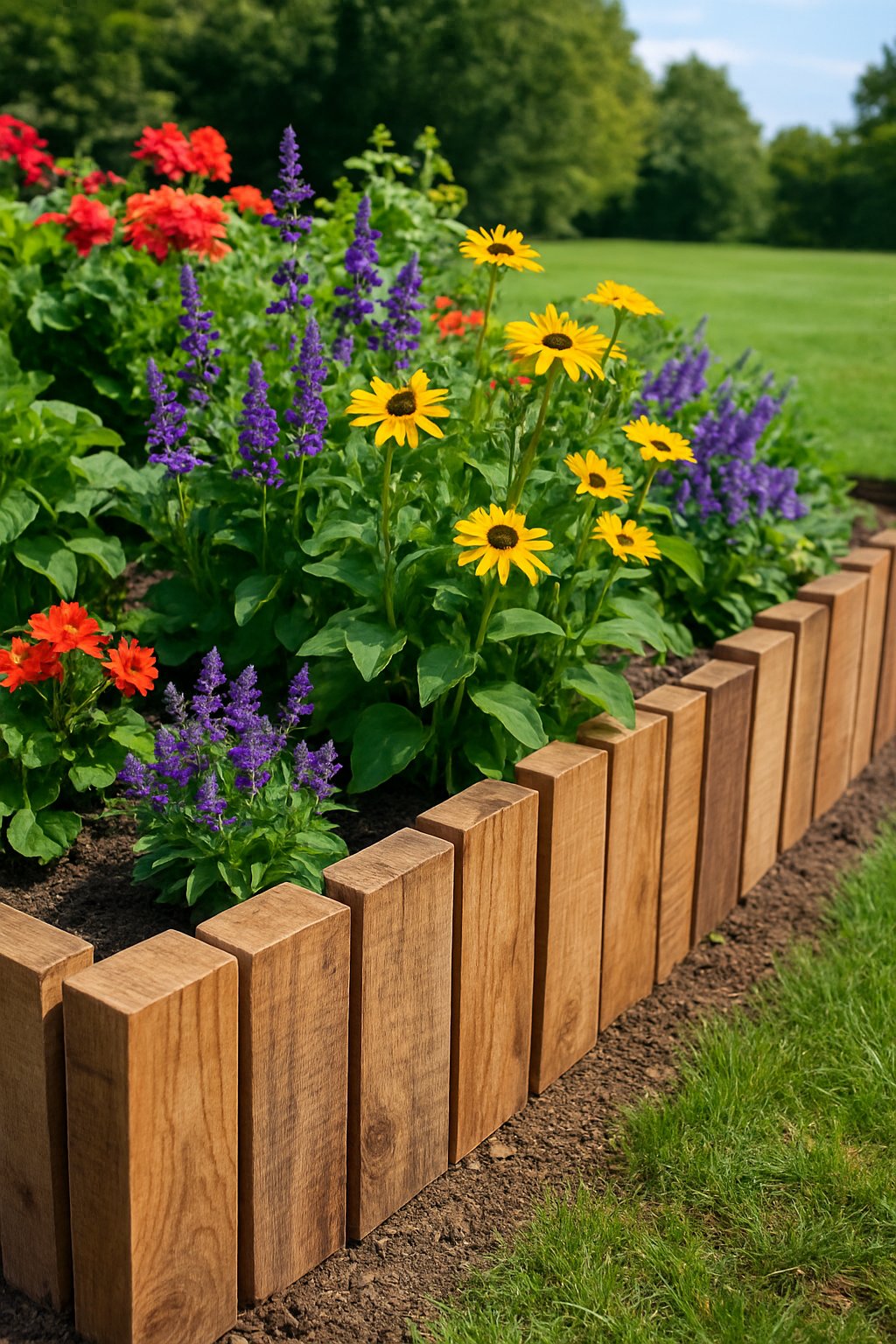
Old pallet wood makes great garden edging. Cut the boards to your preferred length and stand them upright or lay them flat along your beds.
Pallet wood is sturdy if it’s heat treated or kiln dried. This approach brings a rustic, natural vibe without costing much.
Secure the wood with stakes or nails to keep it from shifting. Paint or stain it if you’re feeling creative.
Expert Tip from MrPlanter: “Always check that your pallet wood is heat treated, not chemically treated. This ensures your garden stays safe and your edging lasts longer.”
21. Stacked Slate Pieces
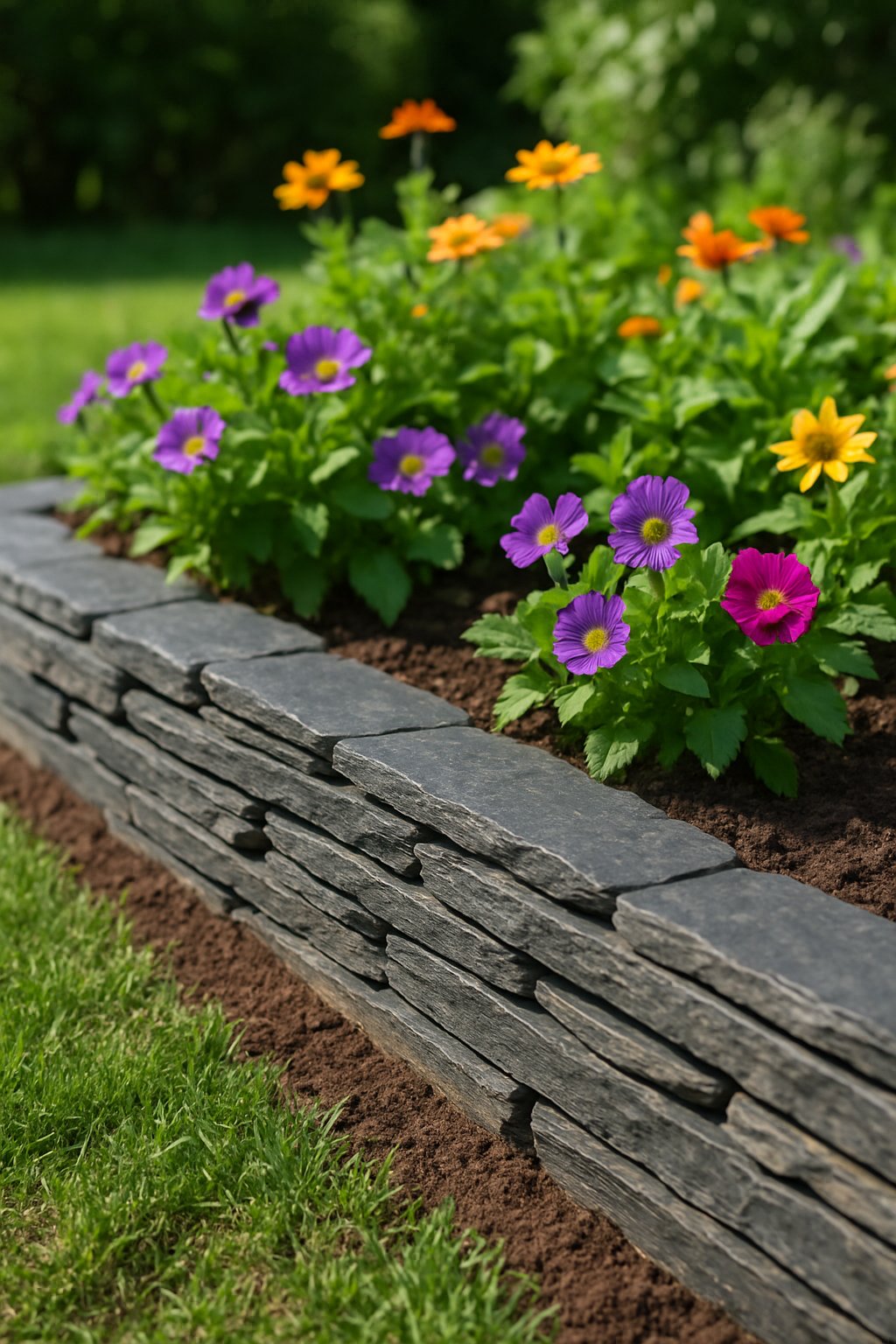
Stack flat slate pieces to build a sturdy garden border. You can layer them into a low wall that keeps soil and plants in check.
Slate is tough stuff and weathers beautifully. Go for pieces of similar size for a straight edge, or mix it up for a more relaxed, natural feel.
Expert Tip from MrPlanter: “Make sure the base stones are level to keep your border stable. Use rubber mallets to gently tap pieces into place for a tight fit.”
22. Brick Pavers Set in Patterns
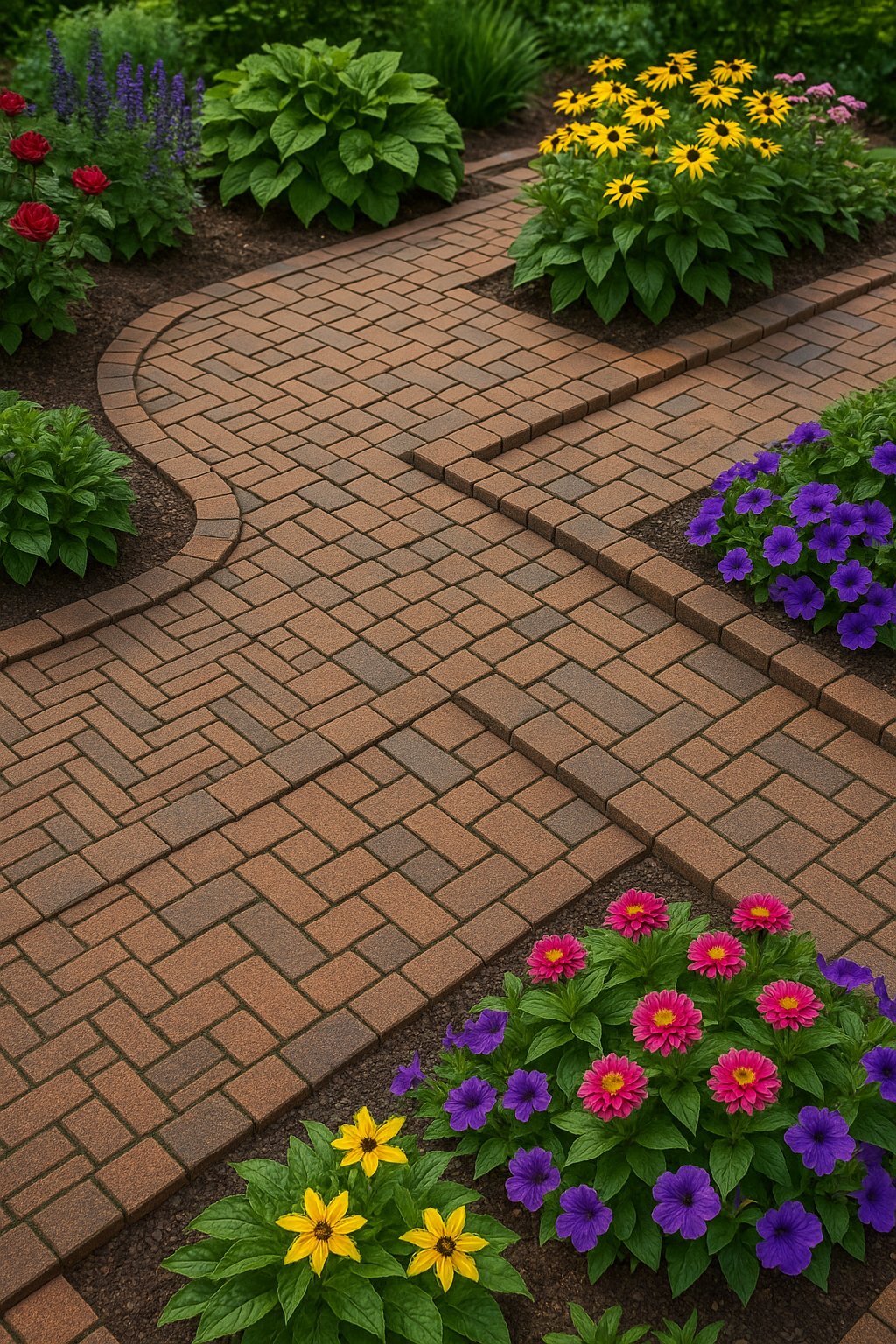
Brick pavers bring a timeless look to your garden border. You can lay them in simple lines or try patterns like herringbone or basketweave for extra flair.
They help define spaces and add texture and color. Patterns highlight pathways or separate beds with a crisp edge.
Plus, brick pavers are pretty durable, so they’ll stick around for years.
Expert Tip from MrPlanter: “Choose bricks with slight color variations for a natural, interesting pattern. Lay a sand base first to keep pavers stable and prevent shifting.”
23. Low Bamboo Fencing
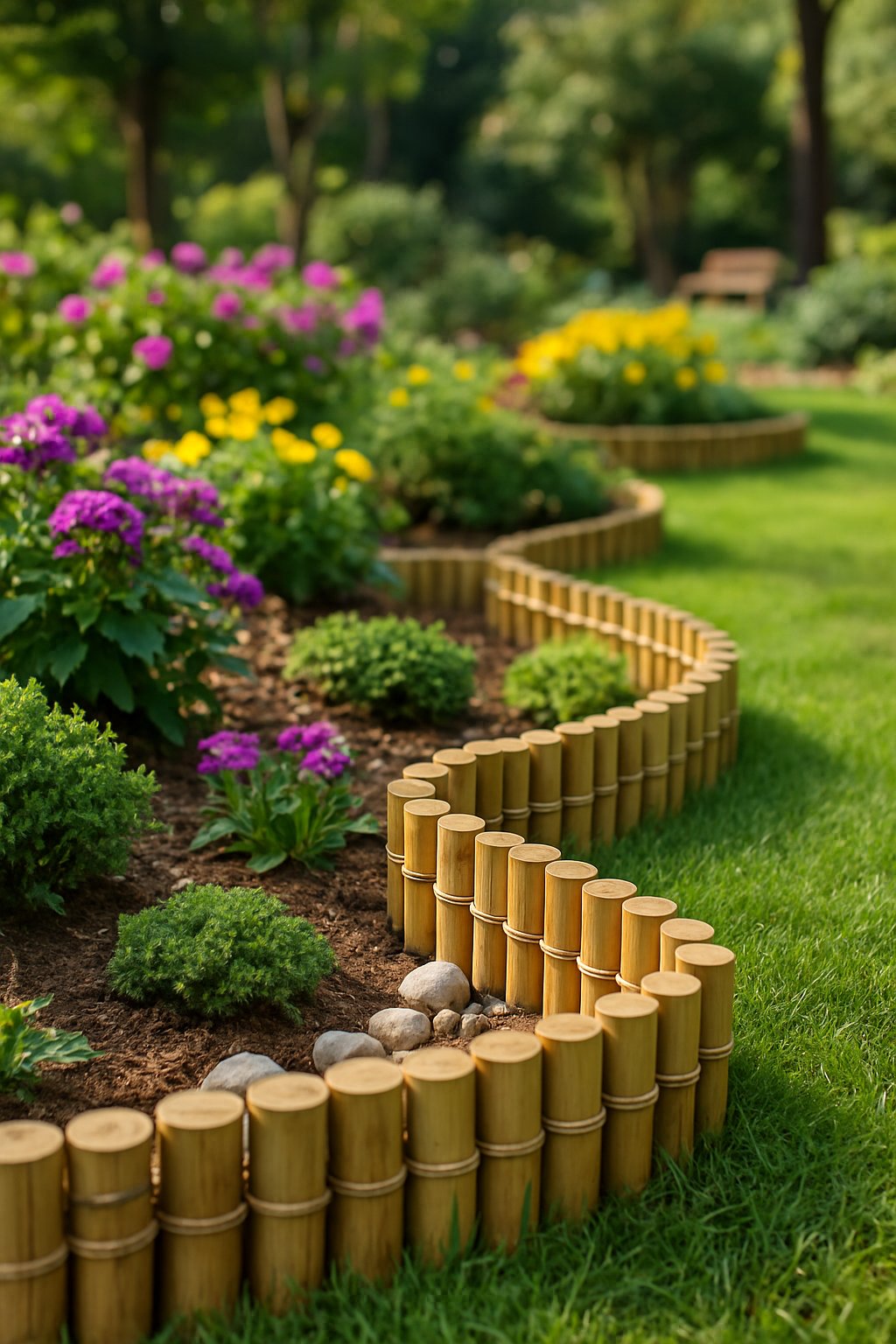
Low bamboo fencing adds a simple, natural border to your garden. It keeps edges neat but lets your plants take the spotlight.
Bamboo is tough and holds up to the weather. Use short poles tied together or woven for a fence that fits with almost any garden vibe.
Expert Tip from MrPlanter: “Choose bamboo poles with even thickness for a clean finish. Seal the bamboo to protect it from moisture and pests.”
24. Edging with Sturdy Ivy Plants
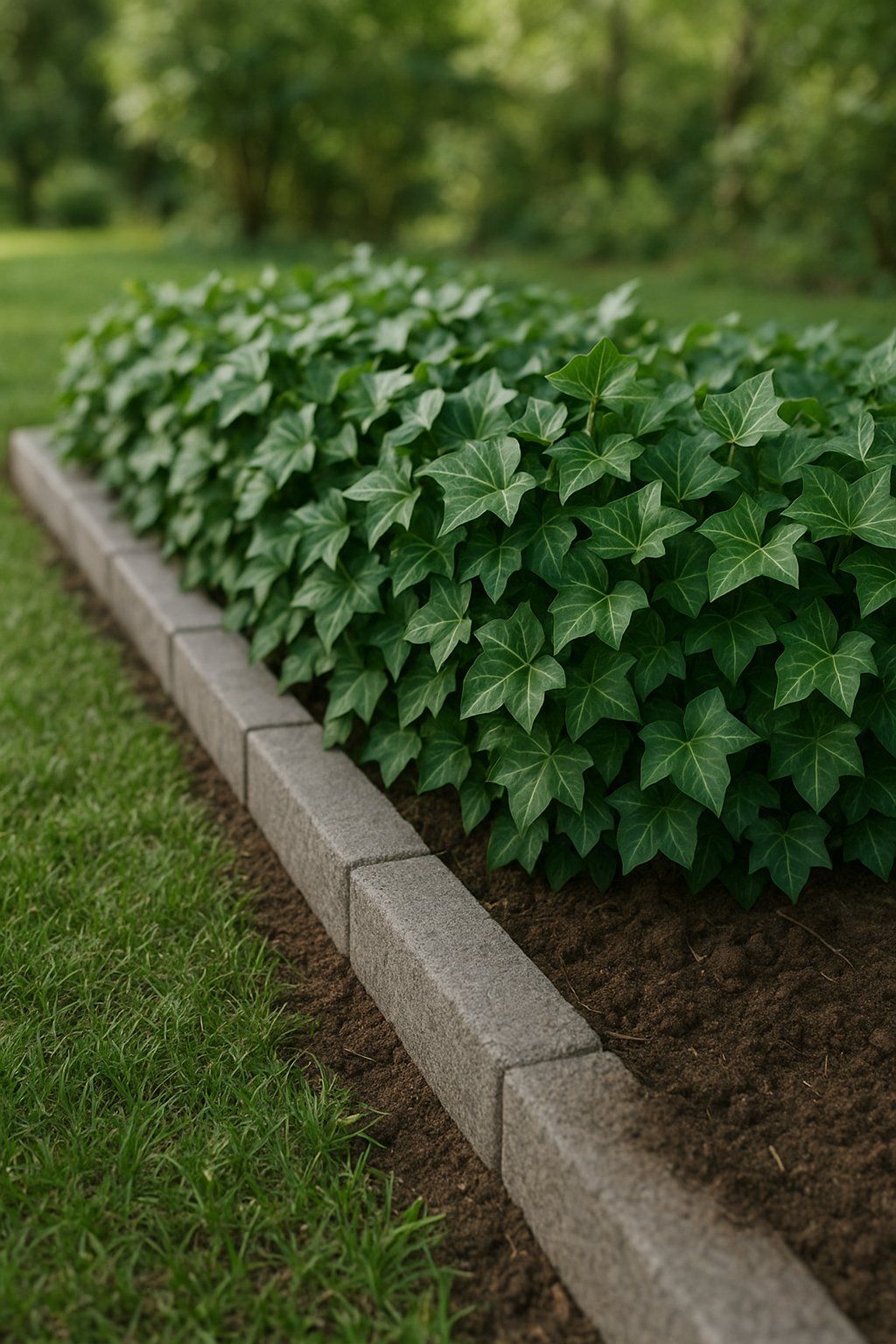
Ivy makes a strong, low-maintenance border. It grows thick and covers the edges of walkways or beds with a deep green, classic look.
Train ivy along fences or walls if you want living borders. Just keep an eye on it—ivy can get a bit wild if you let it go.
Expert Tip from MrPlanter: “Choose hardy ivy types suited to your climate to avoid damage. Trim regularly to keep your border neat and healthy.”
25. Reclaimed Metal Pipe Borders
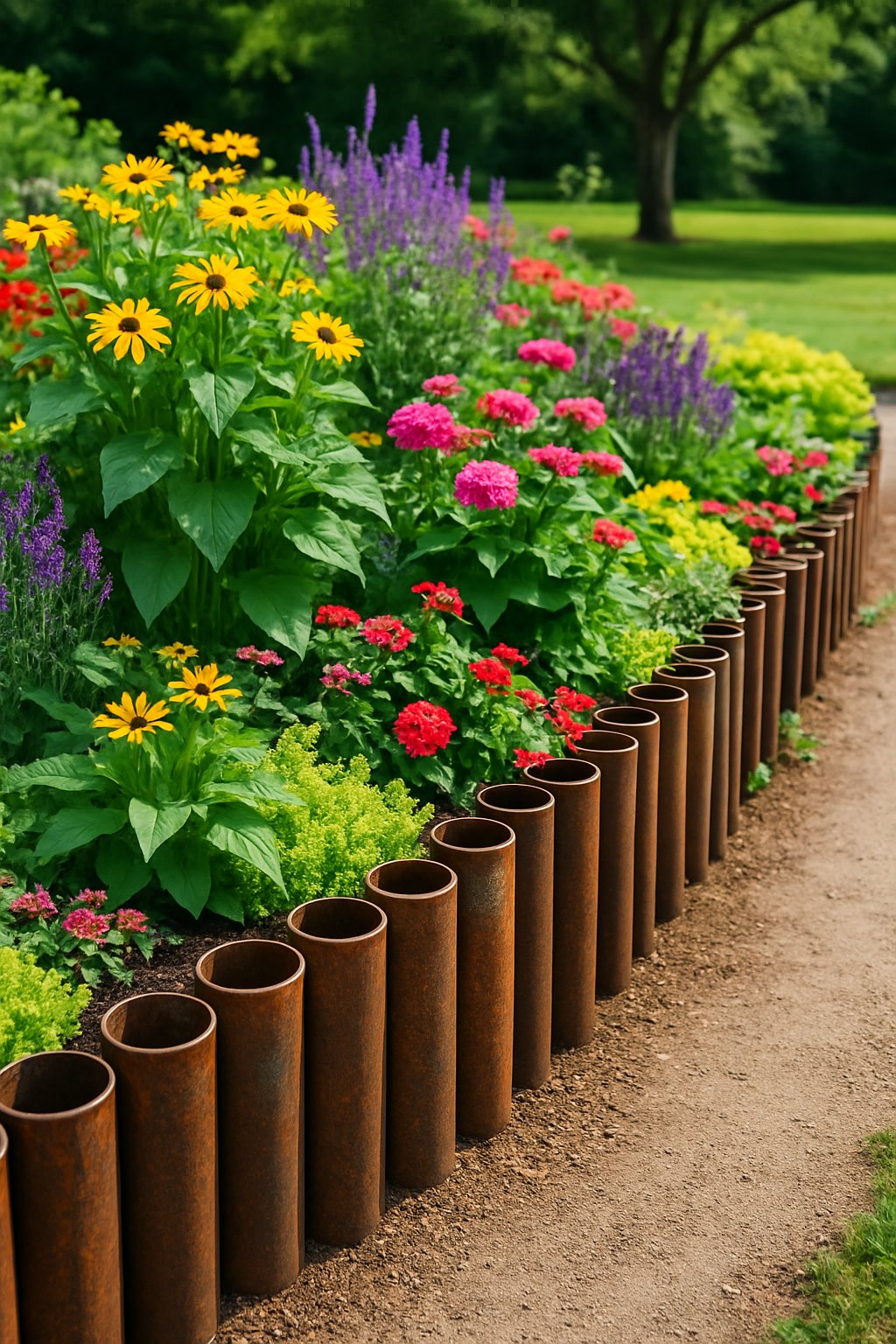
Reclaimed metal pipes can give your garden a quirky, industrial edge. They’re sturdy and work well for keeping soil in place.
Arrange them vertically or horizontally—whatever suits your style. Metal pipes stand up to the weather for years.
Using reclaimed materials is an eco-friendly choice that adds character. Paint them or let them rust naturally for different looks.
Expert Tip from MrPlanter: “Make sure to smooth out any sharp edges on pipes before installing to avoid injuries. Use rust-resistant paint if you want a longer-lasting finish.”
26. Log and Stone Combo Border
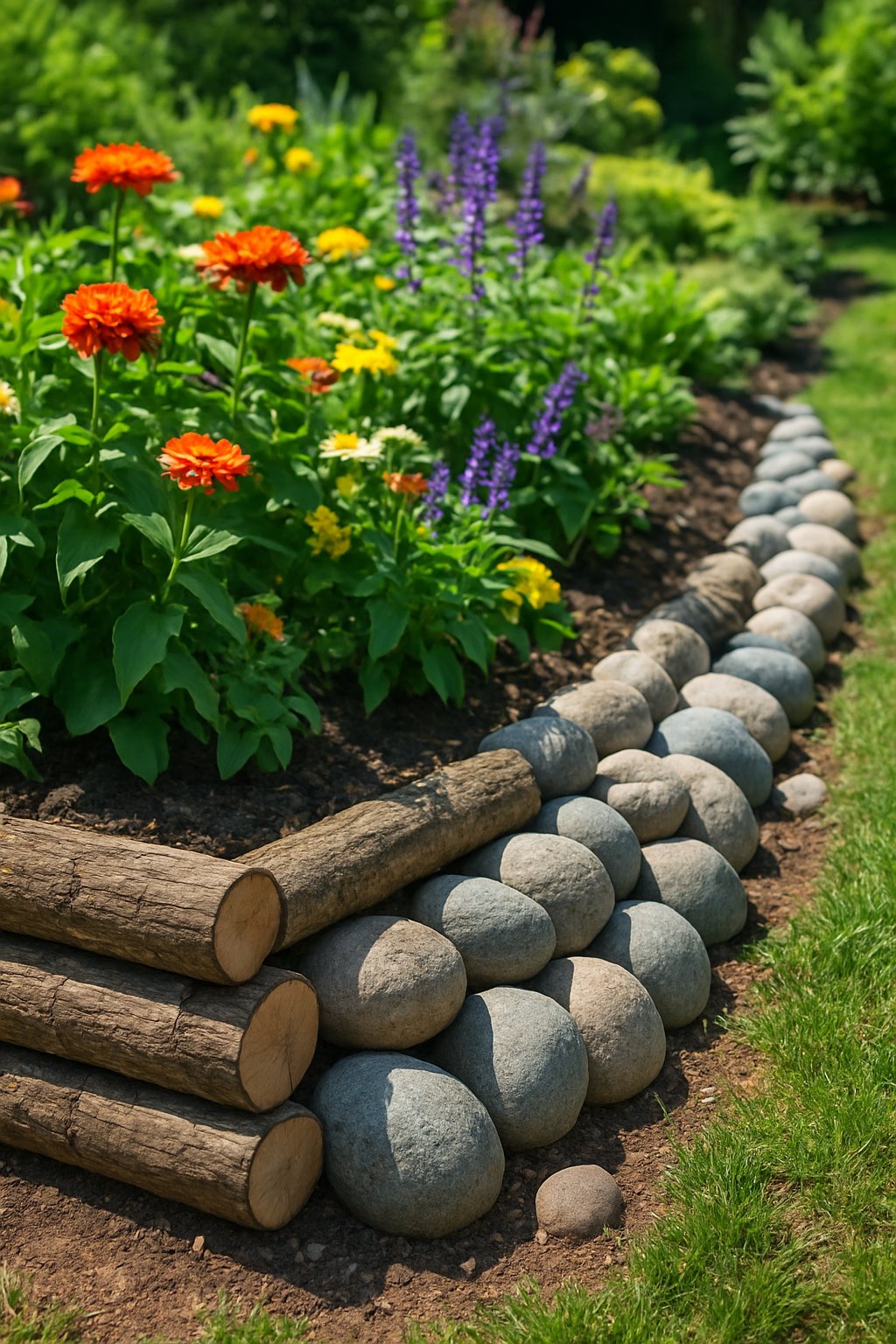
Mix logs and stones for a border that feels rustic and natural. The logs bring warmth, and the stones add a grounded, earthy touch.
Arrange logs side by side, filling gaps with stones for both stability and style. This combo is pretty easy to put together and looks right at home in woodland or country gardens.
Expert Tip from MrPlanter: “Choose logs treated for outdoor use to prevent rotting. Use flat stones to keep the border neat and stable.”
27. Simple Straw Bale Edging

Try using straw bales if you want a natural, easy garden border. They give the space a cozy, rustic vibe and help keep your soil and plants where you want them.
Straw bales are light, so you can move them around whenever you feel like changing things up. As they break down, they add some organic matter back to the soil.
This type of edging fits right in with vegetable beds or small flower gardens. It’s honestly pretty straightforward, but it works.
Expert Tip from MrPlanter: “Place a tarp under straw bales to slow decay and prevent weeds. Replace bales every season for a fresh look and healthy soil.”
